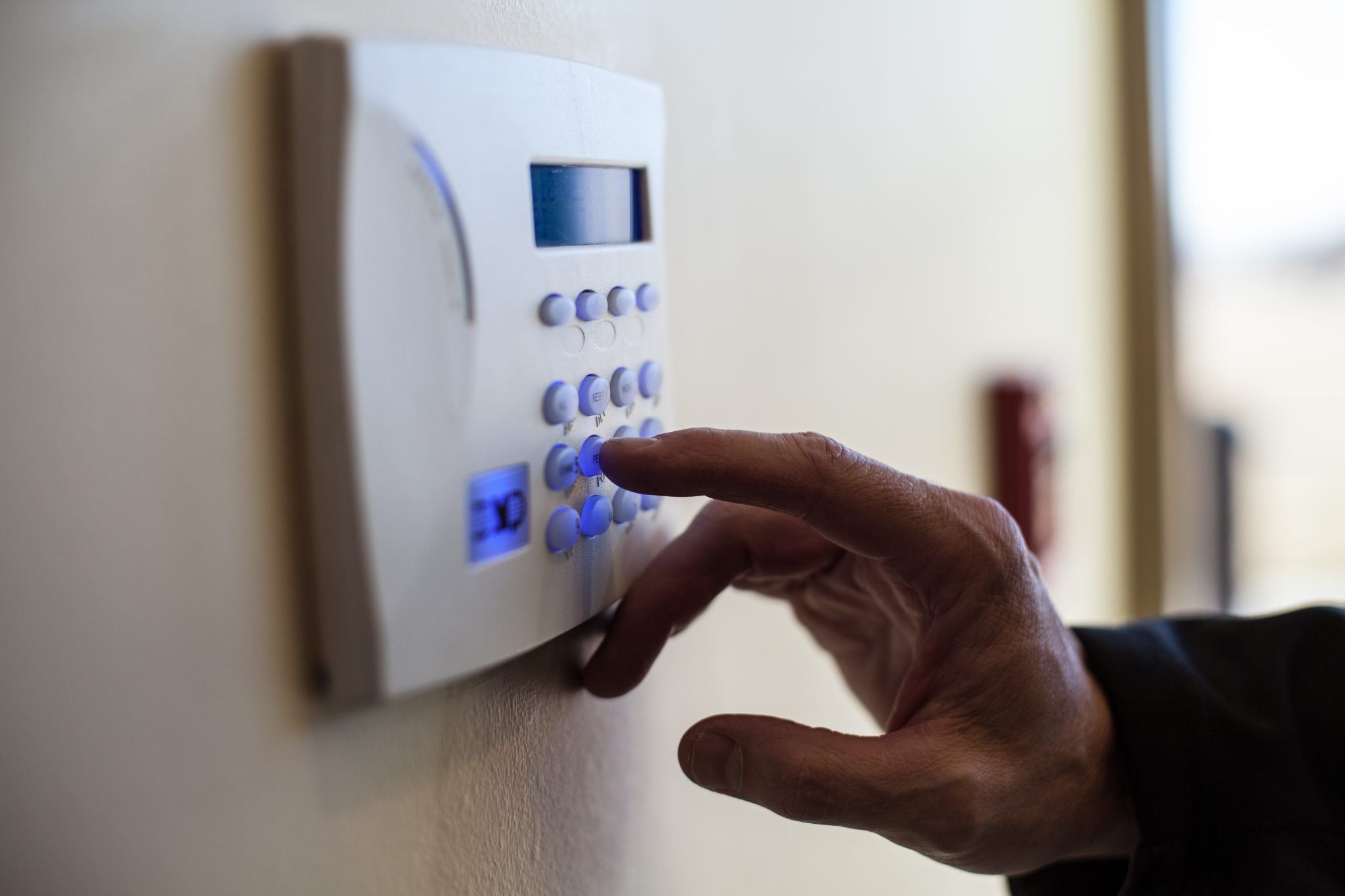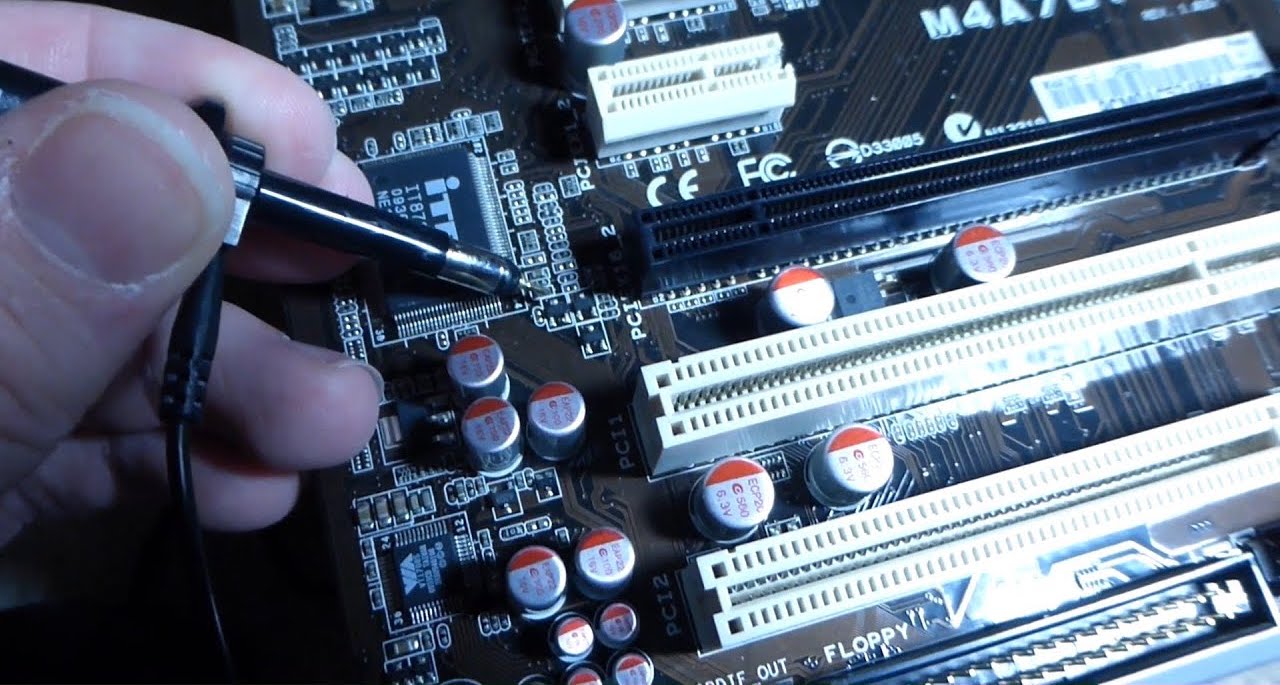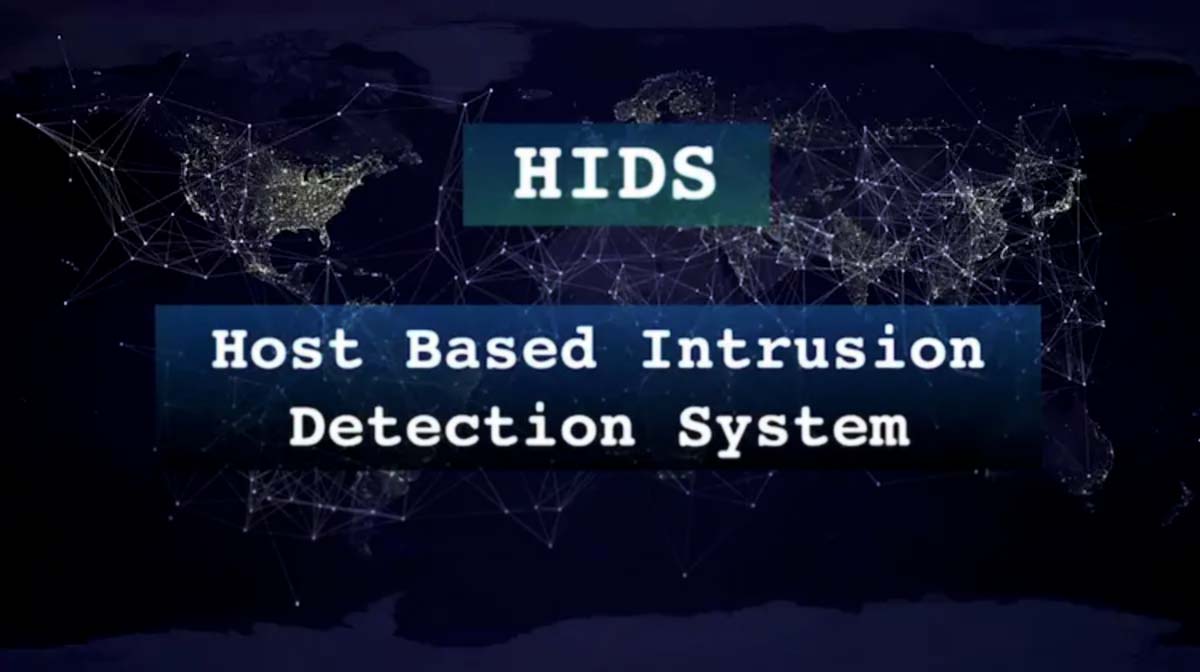Home>Home Security and Surveillance>What Occurs After A Network Intrusion Detection System (NIDS) First Detects An Attack


Home Security and Surveillance
What Occurs After A Network Intrusion Detection System (NIDS) First Detects An Attack
Modified: March 6, 2024
Learn what happens after a Network Intrusion Detection System (NIDS) identifies an attack on your home security and surveillance. Protect your network with effective detection and response.
(Many of the links in this article redirect to a specific reviewed product. Your purchase of these products through affiliate links helps to generate commission for Storables.com, at no extra cost. Learn more)
Introduction
A network intrusion detection system (NIDS) is a vital component of a comprehensive home security and surveillance setup. It serves as the first line of defense against unauthorized access attempts and malicious activities on your network. When a NIDS detects an attack, it triggers a series of actions to protect your network and data.
In this article, we will explore what happens after a NIDS first detects an attack. We will delve into the detection process, the immediate response, the subsequent investigation and analysis, incident containment, evidence collection, incident remediation, and the post-incident review. By understanding the steps involved, you can better appreciate the role of a NIDS in safeguarding your home network.
So, let’s dive in and explore the fascinating journey that unfolds when a NIDS detects an attack.
Key Takeaways:
- When a NIDS detects an attack, it goes through crucial steps like analyzing the attack, taking immediate action, investigating the root cause, and containing the incident to protect your home network.
- After detecting an attack, a NIDS helps in collecting evidence, fixing vulnerabilities, and learning from the incident to strengthen your network’s security and prevent future attacks.
Network Intrusion Detection System (NIDS)
A Network Intrusion Detection System (NIDS) is a security tool designed to monitor network traffic and detect any suspicious or malicious activity. It operates by analyzing network packets, which are small units of data that travel across a network. NIDS can be deployed in various forms, including hardware appliances, software solutions, or a combination of both.
The primary function of a NIDS is to identify and alert network administrators to potential security breaches. It accomplishes this by comparing network traffic against a known database of attack signatures, which are specific patterns or behaviors associated with known attacks. When a match is found, the NIDS generates an alert to notify administrators of the potential threat.
NIDS operates in two different modes: passive and active. In passive mode, the system only monitors network traffic and alerts administrators without taking any direct action. In active mode, the NIDS can actively respond to an attack by blocking or rerouting malicious traffic to protect the network.
Implementing a NIDS can provide numerous benefits for a home security system. It can help prevent unauthorized access to your network, detect and alert you about potential threats, and provide valuable insights into network activity and vulnerabilities. By continually monitoring network traffic, a NIDS serves as an indispensable guardian for your home network.
It is important to note that while a NIDS is a powerful security tool, it is not a silver bullet solution. It should be used in conjunction with other security measures, such as firewalls, strong authentication protocols, and regular software updates. These layers of defense work together to create a robust security framework that can significantly reduce the risk of network attacks.
In the next section, we will explore what happens when a NIDS detects an attack, from the initial detection to the post-incident review.
Detection of an Attack
When a Network Intrusion Detection System (NIDS) detects an attack, it begins a crucial process of identifying and analyzing the malicious activity. The detection phase involves several key steps aimed at accurately identifying the nature of the attack and providing timely alerts to network administrators.
The NIDS continuously monitors network traffic, intercepting and inspecting packets as they traverse the network. The system compares the captured packets against a predefined set of attack signatures, which are specific patterns or behaviors associated with known attacks. If the NIDS identifies a match between the captured packets and a known attack signature, an alert is generated.
Upon detecting an attack, the NIDS categorizes it based on severity to provide administrators with a clear understanding of the potential impact. The severity levels range from low to high, enabling administrators to prioritize their response based on the criticality of the detected attack.
Once an attack is detected and classified, the NIDS generates an alert, which can take various forms, such as an email notification, a pop-up message on the NIDS console, or an integration with a security information and event management (SIEM) system. This alert includes crucial information about the attack, such as the type of attack, the source and destination IP addresses, and the timestamp of the incident.
It is crucial for administrators to promptly and effectively respond to the alerts generated by the NIDS. This ensures that any potential security threats are addressed in a timely manner, reducing the risk of further compromise. By proactively addressing detected attacks, administrators can swiftly implement countermeasures and protect the integrity and confidentiality of their home network.
In the next section, we will explore the initial response that takes place after the NIDS detects an attack.
Initial Response
Once a Network Intrusion Detection System (NIDS) detects an attack, an immediate response is crucial to mitigate any potential damage and defend the network. The initial response phase involves taking swift action based on the alerts generated by the NIDS.
When an alert is received, the first step is to carefully analyze the information provided. This includes reviewing the type of attack, the source and destination IP addresses, and any additional details available. This analysis helps administrators understand the nature and severity of the attack.
Based on the analysis, administrators can determine the appropriate course of action. This could involve isolating the affected system or devices from the network, blocking specific IP addresses, or terminating suspicious network connections. The goal is to minimize the impact of the attack and prevent it from spreading further.
In some cases, the NIDS may have the capability to automatically respond to detected attacks. For example, it can initiate actions to block suspicious traffic or reroute it to a quarantine environment for further analysis. This automated response can significantly reduce the response time and limit the potential damage caused by the attack.
During the initial response phase, it is vital to establish clear communication channels with relevant stakeholders, such as IT personnel, security teams, or managed security service providers (MSSPs). By promptly sharing information about the detected attack, key decision-makers can collaborate and coordinate efforts to mitigate the threat effectively.
Additionally, this phase may involve informing management or other authorized individuals about the attack. Their timely awareness allows for appropriate resource allocation, budget allocation, and overall strategic decision-making to strengthen the organization’s security posture.
Following the initial response, the investigation and analysis phase begins. In the next section, we will explore this critical stage, where in-depth examination of the attack takes place to determine its root cause and potential impact.
Investigation and Analysis
After the initial response stage, the Network Intrusion Detection System (NIDS) initiates an investigation and analysis process to uncover the root cause of the attack and assess its potential impact on the home network. This phase is crucial for understanding the attack’s scope, identifying vulnerabilities, and implementing appropriate remediation measures.
The investigation begins by gathering additional data and evidence related to the attack. This includes collecting network logs, system logs, and any other relevant information that can provide insights into the attack’s origin, methods used, and potential payloads.
The collected data is then analyzed to identify patterns and trends. This analysis helps in understanding the attacker’s motivations, techniques employed, and potential goals. It also provides valuable information for building stronger defenses against similar attacks in the future.
During the investigation, the NIDS may utilize advanced techniques such as packet capture and analysis, traffic flow analysis, and behavior monitoring to gain a comprehensive understanding of the attack. These techniques enable administrators to reconstruct the attack timeline and identify any potential indicators of compromise (IOCs).
Additionally, the investigation and analysis phase involves determining the extent of the attack’s impact on the home network. This includes assessing any unauthorized access or data breach, identifying compromised systems or devices, and estimating the potential loss or damage resulting from the attack.
Once the investigation is complete and a thorough analysis has been conducted, administrators can develop a comprehensive incident report. This report includes details about the attack, the vulnerabilities exploited, and recommendations for strengthening the network’s security posture. This information is crucial for implementing effective incident response measures to prevent future attacks.
In the next section, we will explore the incident containment phase, where steps are taken to prevent further damage and limit the attacker’s access to the network.
After a NIDS first detects an attack, it’s important to immediately isolate the affected systems from the network to prevent further damage. Then, investigate the source and method of the attack to strengthen your network’s defenses.
Incident Containment
After the investigation and analysis phase, the next critical step in the response to a detected attack is incident containment. The goal of incident containment is to prevent further damage and restrict the attacker’s access to the compromised areas of the home network.
Incident containment involves isolating the affected systems or devices from the rest of the network. This can be done by disabling network connectivity, disconnecting compromised devices, or implementing network segmentation to create separate network zones to limit the attack’s spread.
In addition to isolating the affected systems, it is essential to update and strengthen security controls and measures to further fortify the network. This may include patching vulnerabilities, updating security software, implementing stronger authentication protocols, and reconfiguring network devices to enhance security.
During the incident containment phase, it is crucial to monitor network traffic and system logs to detect any attempts by the attacker to regain access or launch additional attacks. This ongoing monitoring helps ensure that the containment measures are effective and provides valuable insights that can be used for further analysis and improvement of the network’s defenses.
Depending on the severity of the attack and the level of expertise available, organizations may also consider engaging external cybersecurity experts or contacting their Internet Service Provider (ISP) for assistance in incident containment. These experts can provide specialized knowledge and additional resources to aid in effectively neutralizing the threat.
Once the incident is successfully contained, the focus shifts to evidence collection for further investigation and potential legal proceedings. This involves preserving relevant logs, system snapshots, and any other digital evidence that may be necessary for forensic analysis or legal purposes.
In the subsequent section, we will discuss the importance of evidence collection in the incident response process.
Evidence Collection
Collecting evidence is a crucial aspect of the incident response process when a network intrusion detection system (NIDS) detects an attack. Proper evidence collection helps in understanding the attack, identifying the responsible parties, and providing documentation for potential legal proceedings.
During the evidence collection phase, all relevant digital evidence related to the attack is carefully collected and preserved. This includes network logs, system logs, firewall logs, captured network packets, and any other artifacts that can provide valuable insights into the attack.
To ensure the integrity of the evidence, it is essential to follow proper forensic procedures. This may involve creating forensic images of affected systems or devices, maintaining a chain of custody for the evidence, and documenting the collection process in detail.
The collected evidence should include information about the attack’s timeline, the techniques employed by the attacker, and any potential indicators of compromise (IOCs) that can aid in identifying the attacker or their methods.
Additionally, it is crucial to document any modifications or actions taken during the incident response process. This documentation provides a clear record of the steps taken to contain the attack and can serve as evidence of due diligence in securing the network.
Properly collected and preserved evidence can be instrumental in legal proceedings, such as filing criminal charges or seeking restitution for damages. It can also be used for internal audits and investigations to identify any weaknesses in the network’s security infrastructure.
It is important to note that evidence collection should be carried out by trained professionals or with the guidance of a digital forensics expert. They can ensure that proper procedures are followed, reducing the risk of mishandling or compromising the integrity of the evidence.
In the next section, we will explore the incident remediation phase, where steps are taken to restore the integrity and security of the home network.
Incident Remediation
After the incident is contained and evidence is collected, the focus shifts to incident remediation. The goal of incident remediation is to restore the integrity and security of the home network, as well as to prevent similar incidents from occurring in the future.
The first step in incident remediation is restoring the affected systems or devices to a known good state. This may involve reinstalling the operating system, updating software and firmware, or applying patches to fix vulnerabilities that were exploited during the attack.
It is also crucial to assess the damage caused by the attack. This includes identifying any compromised accounts, stolen data, or unauthorized changes made to the network or system configurations. Remediation efforts should focus on repairing or mitigating the effects of these damages.
During the remediation process, it is essential to implement security controls to prevent similar incidents from occurring. This may involve enhancing access controls, implementing stricter password policies, deploying additional security measures such as multi-factor authentication, and conducting security awareness training for network users.
Regular backups are also critical in incident remediation. Having recent and reliable backups allows for the restoration of data and systems to a pre-incident state. It ensures that even if data or systems are compromised, they can be recovered without significant loss.
Once the necessary remediation steps are taken, it is important to conduct thorough testing to ensure that the network and systems are secure and functioning properly. This may involve vulnerability scans, penetration testing, and continuous monitoring to detect any lingering vulnerabilities or potential weaknesses.
Throughout the incident remediation phase, proper documentation is essential. This includes documenting the steps taken to restore the network, any changes made to configurations or security measures, and the results of testing and validation efforts. This documentation serves as a reference for future incidents and helps in maintaining a secure and resilient home network.
In the final section, we will discuss the importance of conducting a post-incident review to learn from the attack and improve the network’s security posture.
Post-Incident Review
After the incident has been successfully remediated, it is essential to conduct a post-incident review to evaluate the response to the attack and identify areas for improvement. The post-incident review is a valuable learning opportunity that helps strengthen the security posture of the home network.
During the post-incident review, all the steps and actions taken during the incident response process are analyzed and assessed. This includes reviewing the effectiveness of the NIDS in detecting the attack, the timeliness and appropriateness of the response actions, and the overall coordination and communication among the response team.
The review should include input from all relevant stakeholders, such as IT personnel, network administrators, security teams, and any external experts who were involved in the incident response. Gathering diverse perspectives and insights ensures a comprehensive assessment of the incident and its handling.
Key questions to consider during the post-incident review include:
- Was the incident properly detected by the NIDS, and if not, what improvements can be made?
- Were the response actions effective in containing and mitigating the attack, or were there any deficiencies?
- Were the relevant stakeholders informed and involved in a timely manner?
- What lessons were learned from the incident, and how can the network’s security measures be strengthened?
Based on the findings of the post-incident review, an action plan should be created to address any identified shortcomings and implement necessary improvements. This may involve updating incident response protocols, enhancing the capabilities of the NIDS, providing additional training to the response team, or improving communication channels and collaboration.
Additionally, the post-incident review can serve as a valuable source of information for ongoing risk assessments and security audits. The insights gained from analyzing past incidents can inform the development of proactive security measures to prevent similar attacks in the future.
By conducting a thorough post-incident review and implementing the necessary improvements, the home network can become more resilient and better equipped to handle future security incidents.
To conclude, the journey that unfolds after a Network Intrusion Detection System (NIDS) detects an attack involves detection, initial response, investigation and analysis, incident containment, evidence collection, incident remediation, and a post-incident review. Each step is critical in ensuring the security and integrity of the home network, and by understanding this process, homeowners can take proactive measures to protect their digital assets and safeguard their privacy.
Read more: Which Intrusion Detection Method Can Begin Protecting A Network Immediately After Installation
Conclusion
A Network Intrusion Detection System (NIDS) plays a vital role in home security and surveillance, acting as the first line of defense against unauthorized access attempts and malicious activities on your network. When a NIDS detects an attack, a series of steps are taken to protect your network and data.
The journey that unfolds after a NIDS detects an attack involves several key phases, including detection, initial response, investigation and analysis, incident containment, evidence collection, incident remediation, and a post-incident review. Each phase is crucial in understanding the nature of the attack, mitigating its impact, strengthening the network’s security, and learning from the incident to prevent future attacks.
During the detection phase, the NIDS analyzes network traffic and alerts administrators to potential security breaches. The initial response involves promptly analyzing the attack information and taking appropriate action to minimize the impact. The investigation and analysis phase helps uncover the attack’s root cause and potential impact on the network, while incident containment restricts further damage and isolates affected systems.
Evidence collection is vital for understanding the attack, identifying responsible parties, and potentially pursuing legal proceedings. Incident remediation focuses on restoring the network’s integrity and implementing security measures to prevent similar incidents. Lastly, the post-incident review provides an opportunity for learning and improvement, as it evaluates the response and identifies areas for enhancing the network’s security posture.
By understanding this journey and proactive engagement with a NIDS, homeowners can create a robust security framework that enhances the protection of their home network. However, it is important to note that a NIDS is just one piece of the security puzzle. It should be combined with other security measures like firewalls, strong authentication protocols, and regular software updates for comprehensive protection.
In conclusion, a NIDS is a powerful tool in the battle against network attacks. By leveraging its capabilities, homeowners can safeguard their digital assets, protect their privacy, and enjoy a secure and resilient home network environment.
Frequently Asked Questions about What Occurs After A Network Intrusion Detection System (NIDS) First Detects An Attack
Was this page helpful?
At Storables.com, we guarantee accurate and reliable information. Our content, validated by Expert Board Contributors, is crafted following stringent Editorial Policies. We're committed to providing you with well-researched, expert-backed insights for all your informational needs.













